The Recovery Art Conservation Project is the real surprise of the National Recovery and Resilience Plan (NRP), which was approved by Parliament without debate and passed almost quietly, were it not for the shareable reactions of hilarity triggered by yet another (and improper) misuse of anglicisms. The intervention, among the largest of theentire plan, provides for the allocation of 800 million euros, to be channeled into two lines of action: the earthquake prevention of religious buildings, including those of the Fund for Buildings of Worship (FEC), which are more numerous in the regions of Central-Northern Italy (354 churches, compared to 217 in Southern Italy and the islands: a map FEC / Fund for Buildings of Worship is available here (interno.it); the creation of 5 repositories for works affected by natural disasters.
The conversion of two former barracks (Camerino and Rome) and three former nuclear power plants and factories (Caorso, Garigliano and Bosco Marengo) is earmarked for the latter purpose. Because of the importance of the measures envisaged, the plan would have merited an in-depth discussion when it was presented by the minister to the combined Culture Committees on March 17; this, however, did not happen, as the measures were unilaterally enunciated only at the end of the hearing, in the section that is customarily intended for rebuttal. On the same occasion, Culture Minister Dario Franceschini, in announcing the creation of the five repositories, spoke of the three power plants as factories “already decommissioned and already reclaimed”: a reality that, to tell the truth, is far from being fulfilled, and is indeed undermined by serious logistical criticalities.
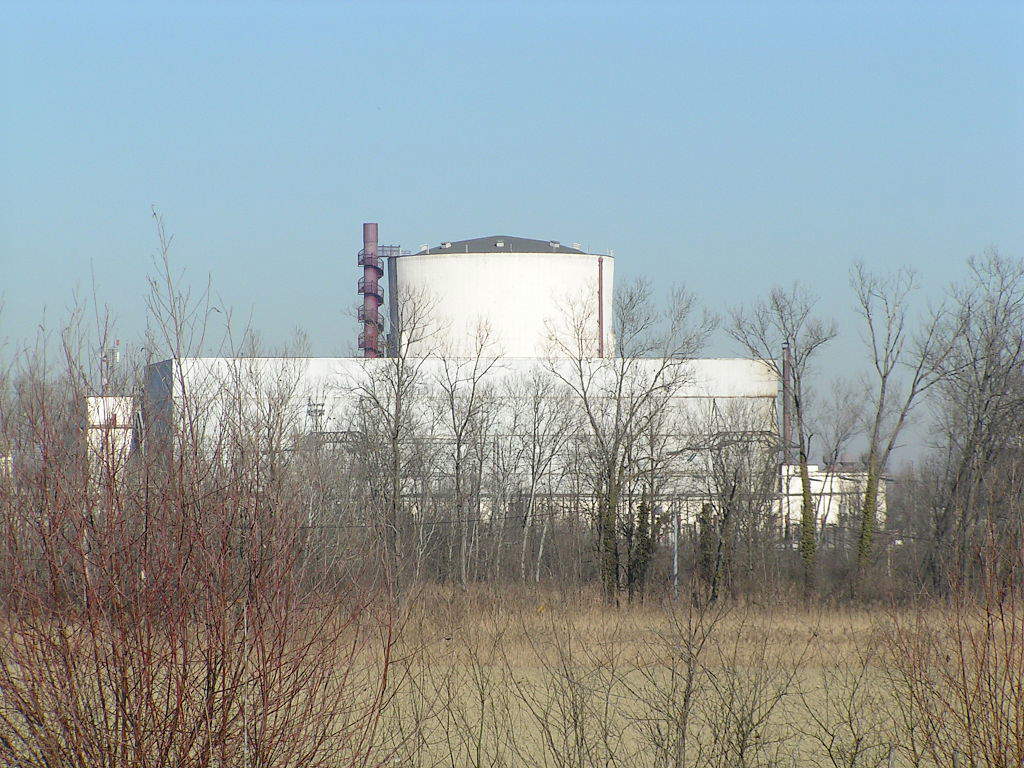 |
| Former Caorso power plant. Photo by Simone Ramella |
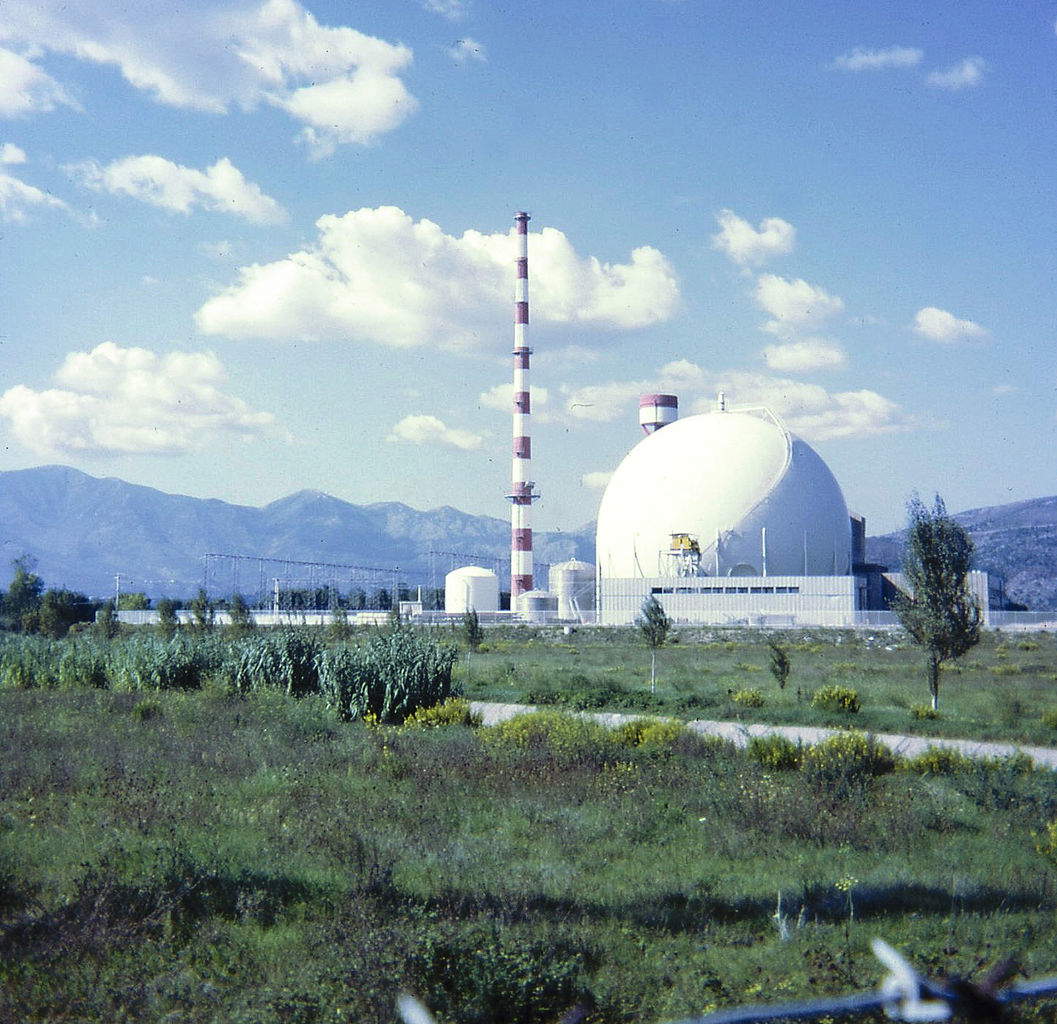 |
| Garigliano power plant |
While waiting for more details on these measures, one can only embrace the proposal for an earthquake prevention plan, even if it is inevitable to wonder which personnel will have to devote themselves to this delicate activity: beyond the very serious staffing shortages, there has long been evidence of a lack of adequate knowledge on the subject within the ranks of the Ministry, which continues to lack engineers, who were also excluded from the 2016 competition. As for the second intervention, the measure has predictably received positive resonance in the territories bordering the former power plants: local communities are first and foremost concerned that the decommissioning operations of those gigantic and unhealthy sites, underway since 1999, are finally completed. But the road to total reconversion still appears long and full of pitfalls. And, because of this, the success of one of the Recovery Art’s cornerstones is subject to many variables, as well as inevitable delays. Even if Sogin, the state-owned company in charge of nuclear site cleanup activities, were to make up the stated shortfall in funds with the unexpected help of the Ministry of Culture, in fact none of the repositories will be ready before 2025. Every year of delay will be a gamble for the places on the Apennine ridge at highest seismic and hydrogeological risk, especially in the absence of an adequate national funding plan for securing the territory . And the timeframe could be further dilated by the operations of setting up and providing storage facilities: the transition of a heterogeneous structure to a place of shelter, study and restoration of a fragile work is not immediate, and will be all the more laborious in the case of former power plants.
Are we really handing over the assets of the areas with the highest seismic risk, such as Molise, Abruzzo and Campania, to facilities (at the Garigliano power plant, for example) that do not in fact exist for that purpose and risk not being fully operational when needed? Predicting disasters is impossible; but accepting the burden of huge maintenance costs for empty depots, in such large spaces, seems at least unreasonable.
It is all the more so if one tries to probe the functionality of existing depots, emergency and otherwise, or track the fates of assets affected by natural events. It took nearly 12 years and much discussion to find a suitable home and restore usability to the modern and contemporary art works of the Museo Nazionale d’Abruzzo dell’Aquila (MUNDA), scattered among a variety of repositories before the decision was made to allocate them to Palazzo Ardinghelli, MAXXI’s branch office in the Abruzzo capital. Many of the works housed in Spoleto’s Santo Chiodo, after the 1997 and 2016 earthquakes, cannot be returned to their places of origin, which, with less luck than the movable heritage, have not benefited from restoration or, at least, from timely safety operations. The situation is even worse in Naples, among the cities with the highest rate of inaccessibility of religious buildings, a long-standing problem that is being attempted to stem in various ways and with still uncertain outcomes. Last May 18, several senators, including Margherita Corrado, questioned Minister Franceschini about the circumstances and personal and institutional responsibilities that led to the abandonment and neglect of the hundreds of works deposited in the basement of the Maschio Angioino: many had been there since the 1980 earthquake. Going even further back in time, one might recall the works affected by the devastating Florentine flood of 1966: some of them are still waiting to be restored in the storerooms of the Opificio delle Pietre Dure in Florence or the Medici villa in Poggio a Caiano (Prato), where, for example, a great many liturgical furnishings are preserved, in addition to paintings, about whose provenance all information has now been lost. After all, the more time passes, the easier it is for valuable information such as this to be dispersed in some failed handover, making it difficult if not impossible to return the works to the places for which they were intended.
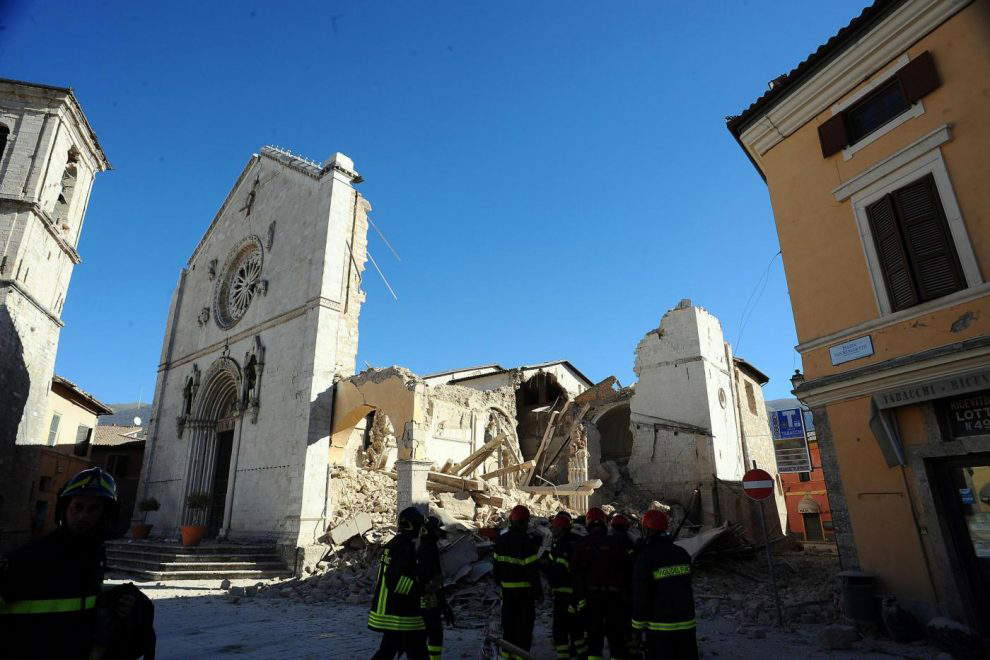 |
| Damage to the basilica of St. Benedict in Norcia immediately after the 2016 earthquake. Photo National Fire Department |
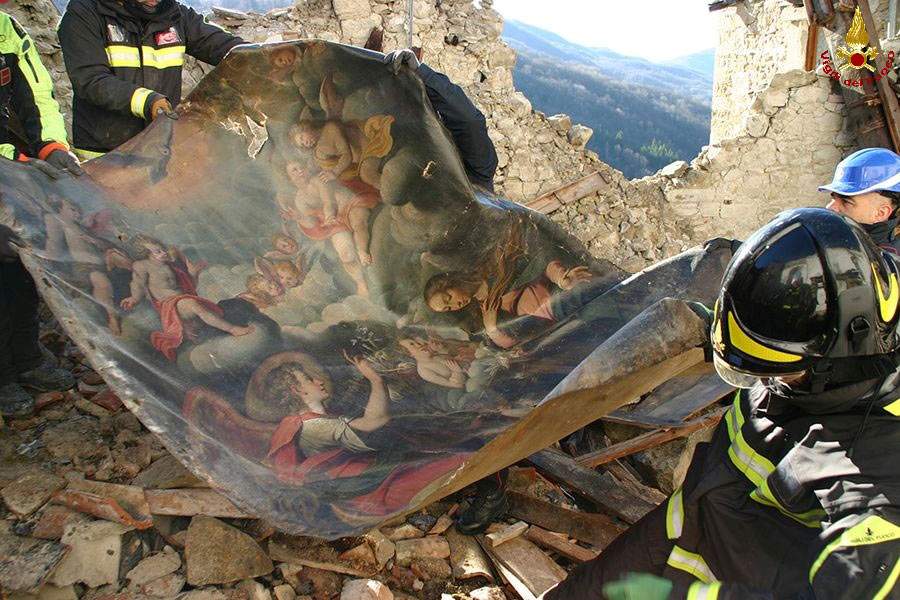 |
| Rescue of works from the Anunziata parish church in Arquata del Tronto. Photo National Fire Corps |
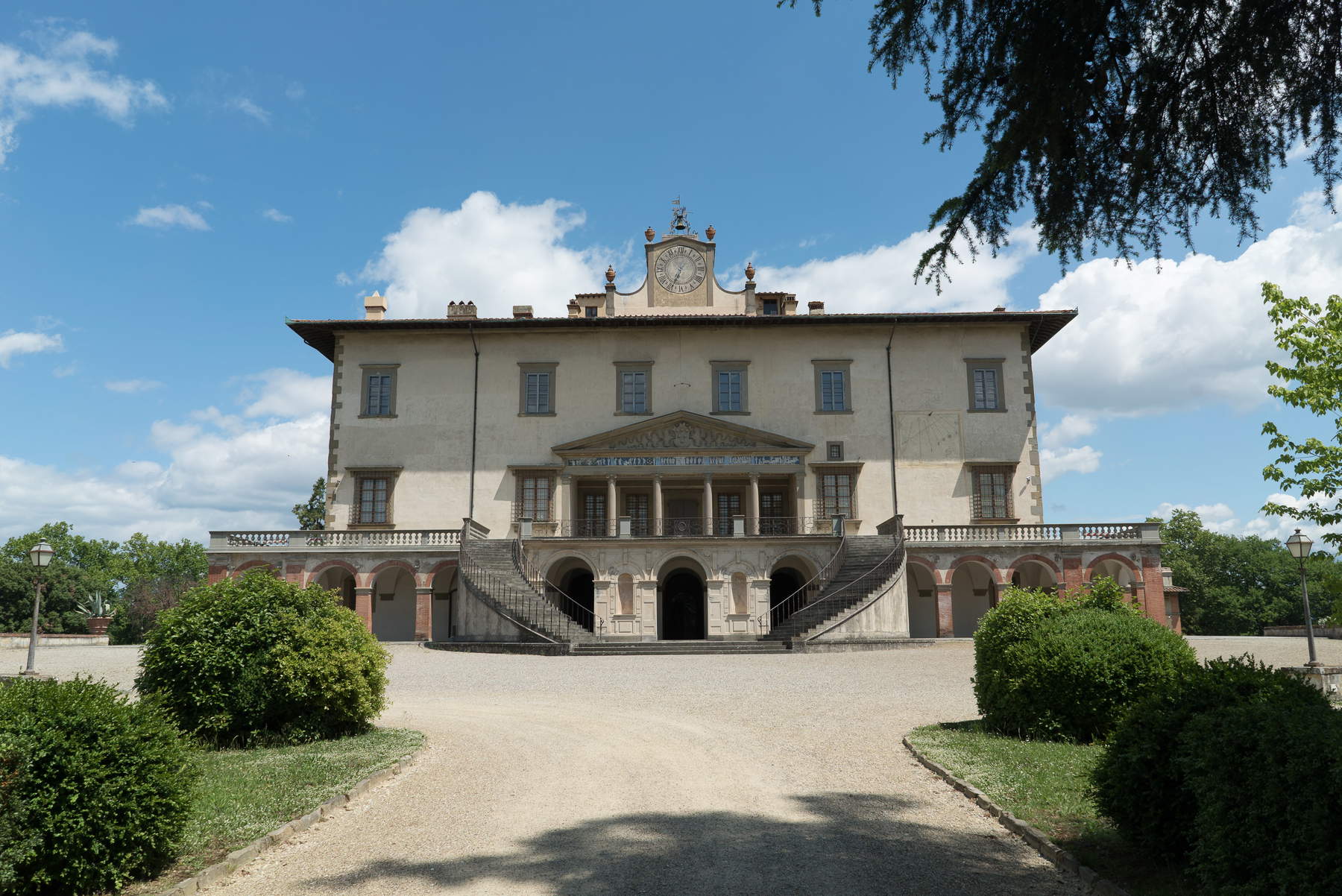 |
| Villa Medicea in Poggio a Caiano. Photo by Stefano Casati |
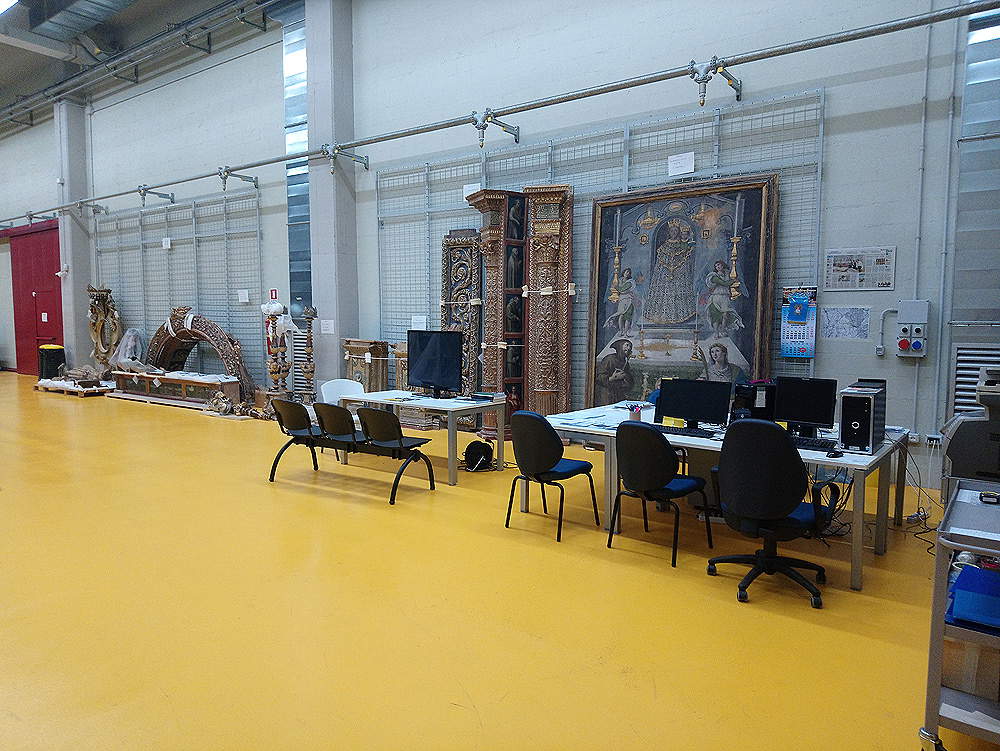 |
| The depository of Santo Chiodo in Spoleto. Photo Finestre Sull’Arte. |
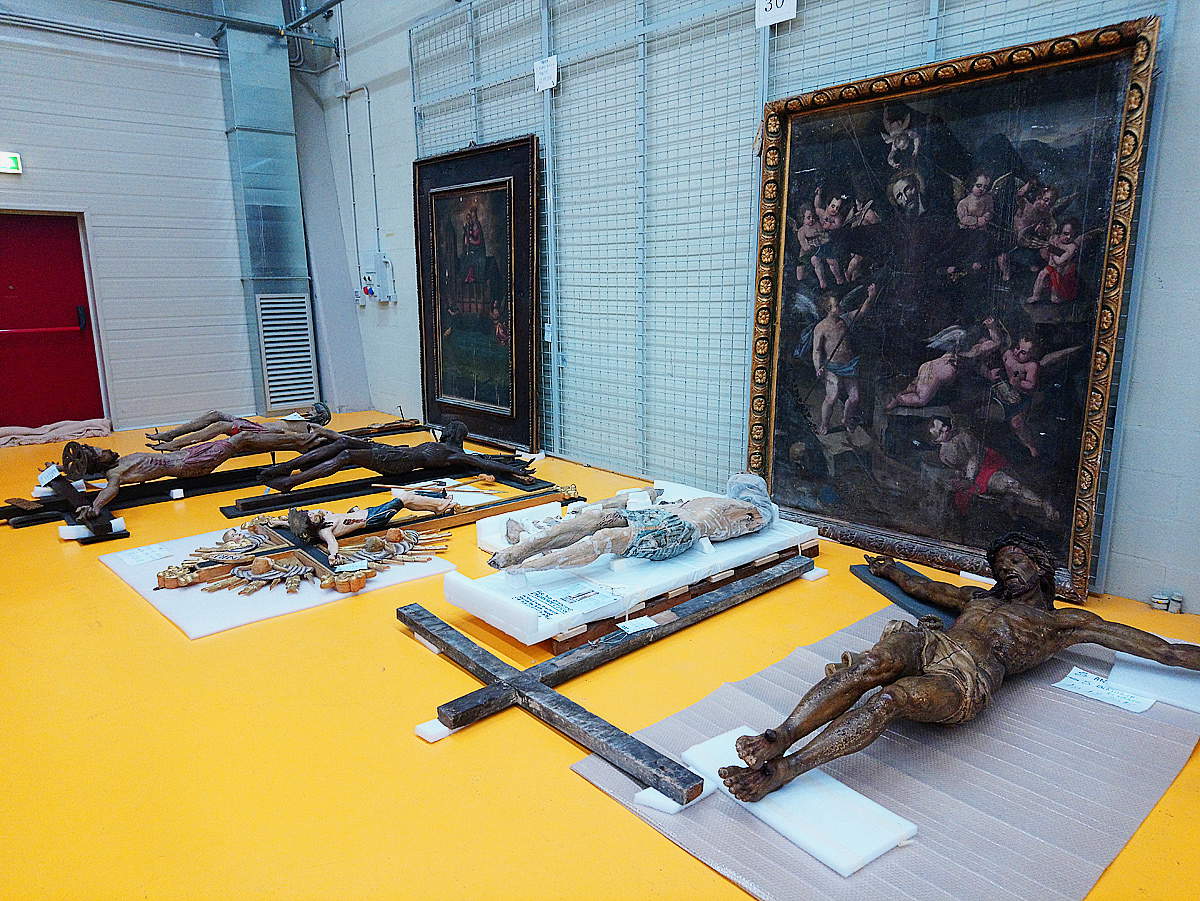 |
| The Santo Chiodo depot in Spoleto. Photo Finestre Sull’Arte |
If emergency programs are not linked to targeted interventions to safeguard the territory and widespread knowledge of the heritage, the repositories will then be permanent (someone has already called them " treasure vaults "), continuing to absorb works that will not be able to be returned to their original contexts. The outcome of this process, which must be opposed with all force, is the tearing apart of the living fabric of heritage. The earthquake that struck in 2016 between Umbria and Marche revealed in the most dramatic way the aporias of a centralizing cultural policy that pays little attention to the ordinary, preventive and capillary care of heritage in its territorial context. The most serious effects are of cogent relevance today: the depopulation of inland areas, the uninhabitable nature of religious buildings, the dispersion of movable property damaged by the collapses, and the operational impotence of the Superintendencies, already weakened by the 2014 Franceschini Reform. The lessons learned from the recent past have been of very little value if the choice has been made to pour the funds, albeit substantial, of Recovery Art toward a few bodies in charge of emergency management, which have nothing to do with the ministerial ones in charge of heritage protection. Safeguarding itself has also been removed from the government’s language: in the brief communiqué on Pnrr Culture, the word counts only one occurrence (along with “knowledge”), compared to the six recorded for “attractors.”
There has been no shortage of attempts in the past to mature a broader vision that goes beyond the logic of emergence. In December 2020, analyzing the work of the Cultural Heritage Protection Fund, established in 2014, the Court of Auditors noted, in addition to the serious lack of personnel, the need to develop “a national strategic vision that knows how to give back to the country and the community a restored cultural heritage also through a less fragmentation of dedicated financial resources and effective planning and monitoring of interventions.” Two years earlier, during a speech at LuBec (Lucca Beni Culturali), engineer Paolo Iannelli, Special Superintendent for the areas affected by the August 24, 2016 earthquake, had identified as a key element in emergency management the provision of “a network of buildings equipped or easily equipped for use in case of emergency,” acquired through a public-private synergy. On-site storage facilities would have multiple advantages: on the one hand, limiting costly and potentially risky travel for an already suffering operation; on the other hand, concentrating funding on the ground and using every resource wisely.
In order to make this happen, it would be necessary to reverse the course that Franceschini has set for his ministry since the nefarious days of the 2014 Reform, pursuing a centralizing model that continues to privilege investments and upgrades on a very few places: after the autonomous super museums, we now find ourselves with large attractors, mega repositories and special Superintendencies. All to the detriment of the territory, whose diffuse system, that yes, is going through a painful “decommissioning” year after year, emptying itself of history, knowledge and human resources
Warning: the translation into English of the original Italian article was created using automatic tools. We undertake to review all articles, but we do not guarantee the total absence of inaccuracies in the translation due to the program. You can find the original by clicking on the ITA button. If you find any mistake,please contact us.